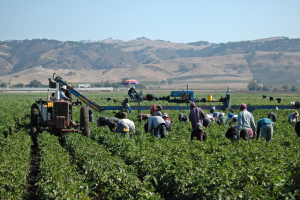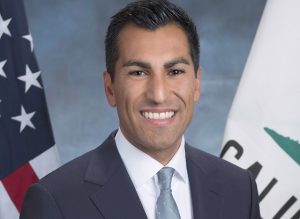Ag Vision Process for California – Phase 2
March 27, 2009 Michael R. DimockHere, in brief, is my perspective on the beginning of Phase II in the CA Ag Vision process, which commenced this past Tuesday night and lasted through Wednesday evening at a Sacramento River resort outside our capital city.
A bit of background
Ag Vision is the effort to develop a broad consensus on how California might arrive at a farming and food system that can be sustained by the year 2030. The Secretary of the California Department of Food and Agriculture, AG Kawamura, and State Board of Food and Agriculture initiated the process in 2008 with five listening sessions up and down the State. Three outcomes emerged from these sessions in which 350 people testified on their visions for agriculture in 2030: Better Health and Well-being, a Healthier Planet, and Thriving Communities. These themes became the frameworks for activity in Phase II, the goal of which is to identify actionable objectives that could be undertaken by the current and future administrations.
The State Board and Secretary invited over 120leaders from production and sustainable agriculture, food access, agricultural labor, and environmental advocacy. Phase II will consist of three all-day retreats and a series of calls, interviews and surveys before and after each retreat. All this activity will take place between now and December, when recommendations will be delivered to the State Board and the Governor.
ROC’s primary NGO ally, Ag Innovations Network, led by Joseph McIntyre, is working with American Farmland Trust (AFT), the prime contractor CDFA hired, to implement the process. Many of the participants are members of the active core of the ROC Community. They include current and past ROC Stewardship Council Members: Jim Cochran, Leonard Diggs, Martha Guzman, Luawanna Hallstrom, Edie Jessup, Mark Kramer, and Jovita Pajarillo; and ROC Fellows or AFA members: Eric Cardenas, Cesar Hernandez, Jonathan Kaplan and Holly King.
Take home messages
This important effort is off to a solid start. Enough of the right people came to confirm that the Ag Vision process is serious. The process was sufficiently well run to legitimize its potential for efficacy. There are glimmers of potentially compelling outcomes. At least there are enough to keep me committed to promoting the effort and contributing with open mind and full heart.
More detailed review
Of the 120+ invited, approximately 90 participants showed up to work. The first night featured a progressive, 3-course meal. Participants moved from table to table with each course in order to meet as many people as possible. Each course featured a series of questions that were meant to reveal the diverse perspectives. It was excellent. I engaged in tête-à-tête with some of the most influential actors from the industrial agriculture industry. I was pleasantly surprised at some of the commonalities that I heard.
Dinner was followed by brief comments from four leaders in organizing the effort: Ed Thompson, California Director of AFT, Karen Ross, President of the California Association of Winegrape Growers and a member of the State Board; Al Montna, President of the State Board and leader of the rice industry,and Secretary Kawamura. Most of these comments were impassioned calls for the mainstream, industrial agriculture industry to participate fully in this process because past approaches,like “circling the wagons” or remaining silent no longer worked. Generally, I found the comments compelling and constructive.
I will complain that they were directed at mainly the largest players in the agriculture industry. If I identified as a labor leader, food access advocate or particularly an environmentalist, I might have felt that my needs were little acknowledged. Yet, I did not see this shortcoming as terminal for the launch because the participation of industrial agriculture is the critical component to making rapid progress. It was merely an off key note at the beginning of much anticipated, but new symphonic work.
But, the next morning began on key. Joseph McIntyre framed what lay ahead, what the rules of engagement would be, and what was actually needed if we are to be successful in the process.Basically it can be boiled down to respect, honesty, and flexibility.He described what it means to face a “wicked problem,” (OD parlance), which is precisely what we do face.In short, a wicked problem is one in which complexity is real and the interlocking issues cannot be solved by a few quick fixes. The problem is more like a Rubik’s cube than a kid’s puzzle featuring a picture of farmyard animals. Joseph was as provocative and forceful as I have ever seen him and I think it was the
Following the opening, we broke into the three groups of thirty people in separate areas of the resort, based on the aforementioned themes of focus. I was in the Thriving Communities group. Each group began with a series of fish bowls, which are a consensus-building technique common to the ROC sponsored California Roundtable on Agriculture and Environment, Ag Futures Alliances and Fellows retreats. Fish bowls are small focus group discussions among four or five people from the larger group. While the bowl talks among itself, the others in the group watch in silence.Following the fish bowl, the entire group dialogs on what was heard. Our fish bowl topics were water, farm labor, and markets. These sessions teased out the areas of opportunity and of conflict.
After lunch Thriving Communities broke into small groups of five to identify our core common needs or interests. This was a means to get us out of “positions” on issues and into clarity on the end results we each sought. So rather than saying, “I need more reservoir storage” (merely one way to accumulate water), you would say, “I need water to grow my crops.” The “need” is sufficient water. There might be ten creative ways to get the water. This approach to conflict resolution was first popularized in a book called Getting to Yes, authored by negotiation experts out of Harvard University, Roger Fisher, William Ury, and Bruce Patton. This exercise worked well. It was the high point of the day for me.
We identified eleven fundamental needs. Examples are sufficient water for both crops and environment; flexible workforce; access to markets; healthy people; supportive public; and sufficient land base to produce food. These are objective outcomes toward which we can then work via scenario planning or other means.The important outcome was that all of us in Thriving Communities agreed that the entire list of needs was acceptable and reasonable. None of the needs was challenged or vetoed.
After clarifying these needs, we moved back into small groups to define “bold ideas”that might lead to the achievement of the needs. Thriving Communities came up with a substantial list, but I felt only two of the total were actually bold.This is where progress began to bog down for me. But I have high expectations because I have worked for years with people that are now enjoying a relatively high level of trust.
In the last hour, all three workgroups reconvened in the ballroom to share the bold ideas they had generated. Again, I felt that few of the ideas were bold. My take is that timidity or conventional thinking prevailed due to a lack of trust or belief that great things are possible. It is to be expected given the fact that we have just begun the real work. I remain hopeful and will give you another update following the next session in early September.



